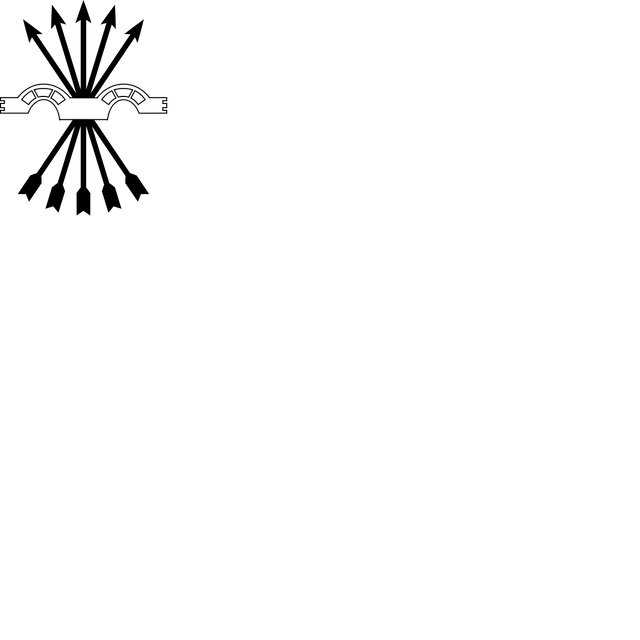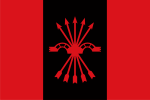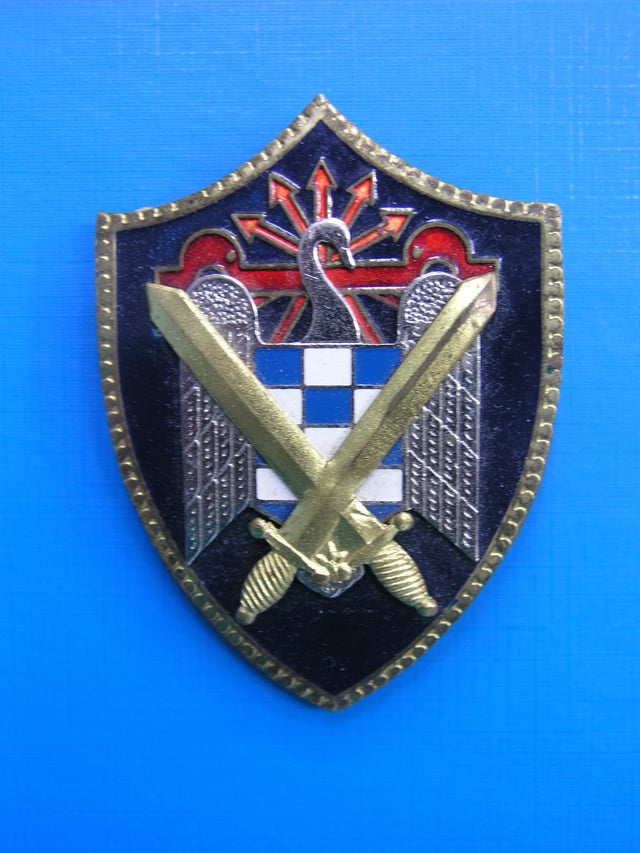Falange Española de las JONS

Falange Española de las JONS

Falange Española de las Juntas de Ofensiva Nacional Sindicalista | |
|---|---|
| National Chief | José Antonio(first) Manuel Hedilla(last) |
| Founded | February–March 1934 |
| Dissolved | 19 April 1937 (1937-04-19) |
| Preceded by | Falange Española JONS |
| Merged into | FET y de las JONS |
| Headquarters | Madrid, Spain |
| Newspaper | Diario Arriba |
| Student wing | Sindicato Español Universitario |
| Women's wing | Sección Femenina |
| Ideology | Falangism National syndicalism |
| Political position | Far-right |
| Religion | Catholic Christianity |
| Anthem | Cara al Sol |
| Party flag | |
 | |
| |
The Falange Española de las Juntas de Ofensiva Nacional Sindicalista (FE de las JONS; English: Spanish Phalanx of the Councils of the National Syndicalist Offensive), was a fascist political party founded in 1934 as merger of the Falange Española and the Juntas de Ofensiva Nacional-Sindicalista. The Falange Española de las JONS ceased to exist as such when, during the Civil War, General Francisco Franco merged it with the Traditionalist Communion in April 1937 to form the similarly named Falange Española Tradicionalista y de las JONS, which became the sole legal party in Spain until its dissolution in 1977.
Falange Española de las Juntas de Ofensiva Nacional Sindicalista | |
|---|---|
| National Chief | José Antonio(first) Manuel Hedilla(last) |
| Founded | February–March 1934 |
| Dissolved | 19 April 1937 (1937-04-19) |
| Preceded by | Falange Española JONS |
| Merged into | FET y de las JONS |
| Headquarters | Madrid, Spain |
| Newspaper | Diario Arriba |
| Student wing | Sindicato Español Universitario |
| Women's wing | Sección Femenina |
| Ideology | Falangism National syndicalism |
| Political position | Far-right |
| Religion | Catholic Christianity |
| Anthem | Cara al Sol |
| Party flag | |
 | |
| |
History
Early history
In 1934, Falange Española merged with the Juntas de Ofensiva Nacional-Sindicalista of Onésimo Redondo and Ramiro Ledesma, becoming the Falange Española de las Juntas de Ofensiva Nacional Sindicalista.
The party direction was initially organised as a triumvirate formed by Ramiro Ledesma, Ruiz de Alda and José Antonio Primo de Rivera, while the secondary General Secretary position was given to Raimundo Fernández-Cuesta.[1] The party attracted a considerable number of prominent intellectuals, including Pedro Mourlane Michelena, Rafael Sánchez Mazas, Ernesto Giménez Caballero, Eugenio Montes, José María Alfaro, Agustín de Foxa, Luys Santa Marina, Samuel Ros, Jacinto Miquelarena and Dionisio Ridruejo.[2]
Being a somewhat echumenical party, Martin Blinkhorn has recognised at least four different ideological strands within the Falange since the fusion until the expulsion of Ledesma: the conservatism one espoused by monarchists such as Francisco Moreno Herrera, marquis of the Eliseda, the authoritarian Catholicism of Onésimo Redondo, the radical (and anti-clerical) national syndicalism of Ramiro Ledesma and the distinctive elitist regenerationism of José Antonio Primo de Rivera.[3]
In October 1934, the direction unified under a Jefe Nacional (National Chief) in the person of José Antonio and developed the political program known as "the 27 Points".[4]
In November 1934, the marquis of the Eliseda, who was a financial backer of the party, left the Falange over disagreements with the proposals of the party in regards of the state-church relations, which he deemed "frankly heretical". His dismissal left the party without its main financial income and propaganda apparatus.[5]
Inner tensions over the draft of the political program continued. The power struggle between Ramiro Ledesma, who espoused a radical and anti-capitalist vision; and José Antonio Primo de Rivera, which held a more conservative and aristocratic one, eventually led to the expulsion of Ledesma in January 1935.[6]
The party was republican, modernist, championed the lower classes and opposed both oligarchy and communism, but it never garnered the kind of popular following demonstrated by fascist movements elsewhere in Europe.[7] For these reasons, the Falange was shunned by other right-leaning parties in the Spanish general election of 1936, where it received just 0.7% of the vote and did not win a single seat in the Cortes. It only surpassed one percent of the vote in five provinces, performing best in the provinces of Valladolid and Cadiz, where it received between 4% and 5%.[8] Having likely never exceeded ten thousand members in the early 1930s, the Falange lost supporters in the run-up to the Spanish Civil War, leaving a core of young, dedicated activists, many in the organization's student organization, the Sindicato Español Universitario.[9]
Following the elections the left-wing Popular Front government persecuted the Falange and imprisoned the Marqués de Estella on 6 July 1936. In turn, the Falange joined the conspiracy to overthrow the Second Spanish Republic, supporting the military revolt ultimately led by Francisco Franco and continuing to do so throughout the ensuing Spanish Civil War.
Spanish Civil War

The swan, symbol of Ximenez de Cisneros, also symbol of the Frente de Juventudes.
With the eruption of the Civil War in July 1936, the Falange fought on the Nationalist faction against the Second Spanish Republic. Expanding rapidly from several thousand to several hundred thousand,[10] the Falange's male membership was accompanied by a female auxiliary, the Sección Femenina. Led by the José Antonio's sister Pilar, this latter subsidiary organization claimed more than a half million members by the end of the war and provided nursing and support services for the Nationalist forces.[11]
The command of the party rested upon Manuel Hedilla as many of the first generation leaders were dead or incarcerated by the Republicans. Among them was Primo de Rivera, who was a government prisoner. As a result, he was referred to among the leadership as el Ausente, ("the Absent One"). After being sentenced to death on 18 November 1936, José Antonio Primo de Rivera was executed on 20 November 1936 (a date since known as 20-N in Spain) in a Republican prison, giving him martyr status among the Falangists. This conviction and sentence was possible because he had lost his parliamentary immunity after his party did not have enough votes during the last elections.
After Francisco Franco seized power on 19 April 1937, he united under his command the Falange with the Carlist Comunión Tradicionalista with the Unification Decree, forming the Falange Española Tradicionalista y de las JONS (FET y de las JONS), whose official ideology was the Falangists' 27 puntos—reduced after the unification to 26. Despite this, the party was in fact a wide-ranging nationalist coalition, closely controlled by Franco. Parts of the original Falange (including Hedilla) and many Carlists did not join the unified party. Franco had sought to control the Falange after a clash between Hedilla and his main critics within the group, the legitimistas of Agustín Aznar and Sancho Dávila y Fernández de Celis, that threatened to derail the Nationalist war effort.[12]
None of the vanquished parties in the war suffered such a toll of deaths among their leaders as did the Falange. 60% of the pre-war Falangist membership lost their lives in the war.
However, most of the property of all other parties and trade unions were assigned to the party. In 1938, all trade unions were unified under Falangist command.